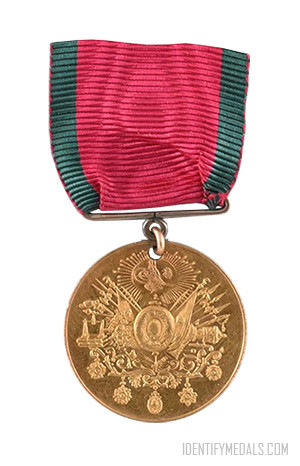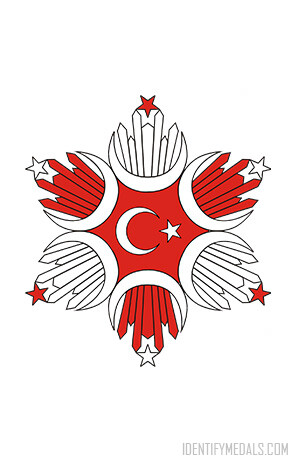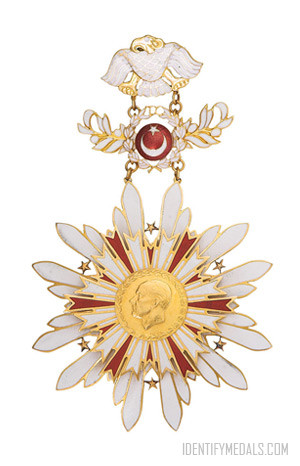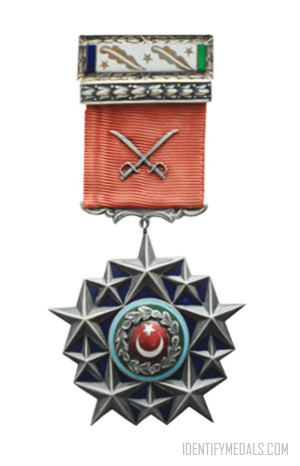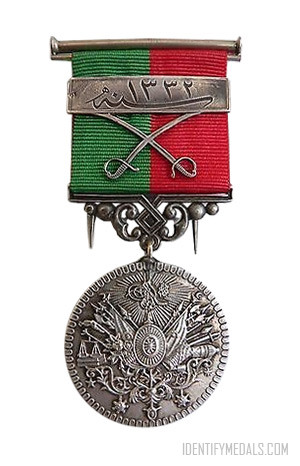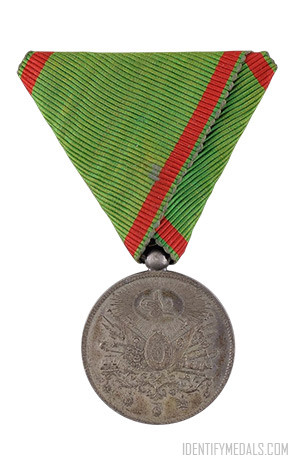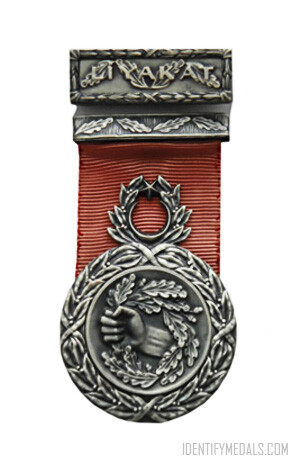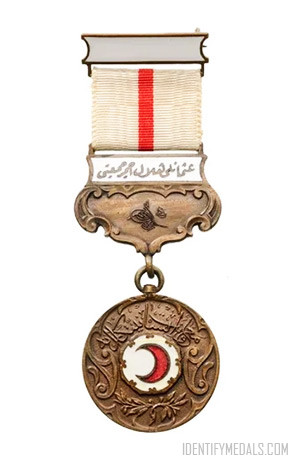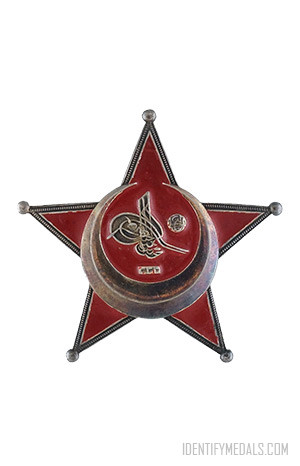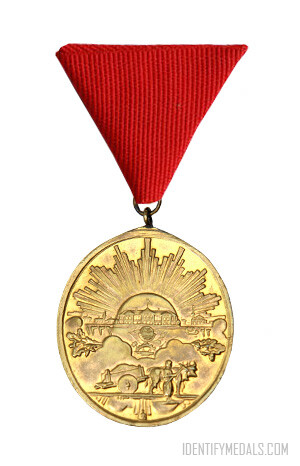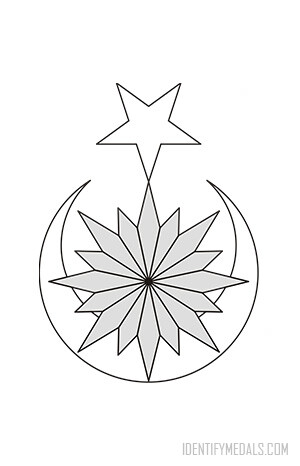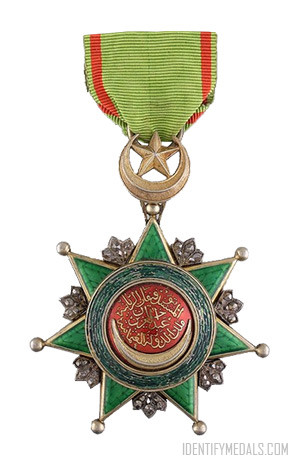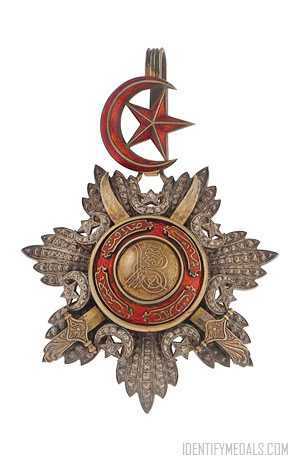The Liyakat Medal (or Liyakat Madalyasi in Turkish) was a decoration of the Ottoman Empire established in 1890 and awarded in two classes: gold or silver. The medal was not strictly a military award and could be awarded for general merit in society such as to civilians for general merit to society.
The medal was a common military decoration through the end of the First World War. In 1905 the statutes were amended to allow women to receive the medal for charitable work, service to mosques or schools, and other decidedly civilian merits.
The Liyakat Medal Design
The medal measured 25 mm in diameter came in both gold and silver classes. It’s suspended from a red ribbon with narrow green side stripes.
The obverse bears the ottoman trophy of arms with the sultan’s cipher above it. The reverse bears the inscription “Medal of Merit Especially for Those Who Have Shown Loyalty and Bravery” and the date AH 1308 (1890 AD).
During World War I a clasp of two crossed swords was attached to the ribbon with the date AH 1333 (1915) inscribed upon them. Copies of the Liyakat medal made in Germany and Austria around the First World War are sometimes found with and without the crossed sabers device. These copies are rarer than original pieces, and command a premium among collectors.

